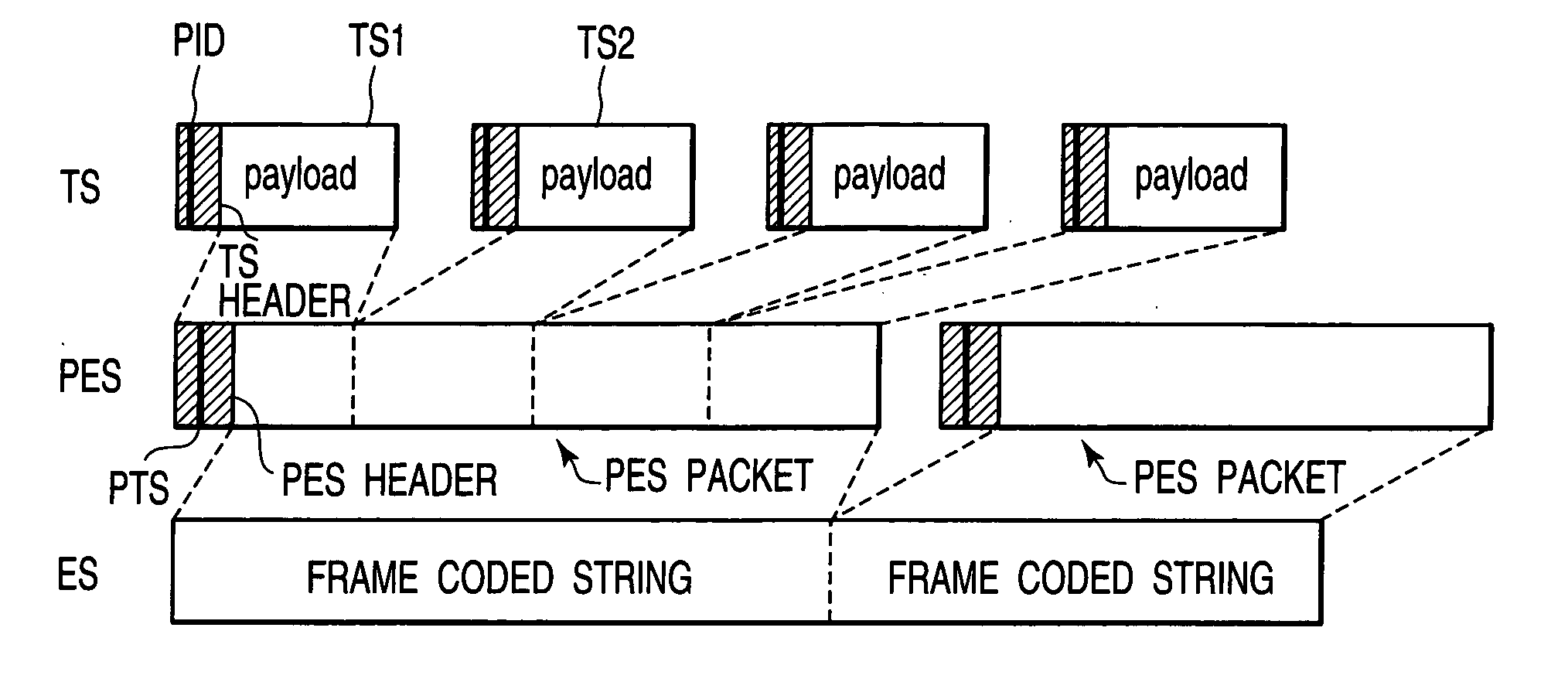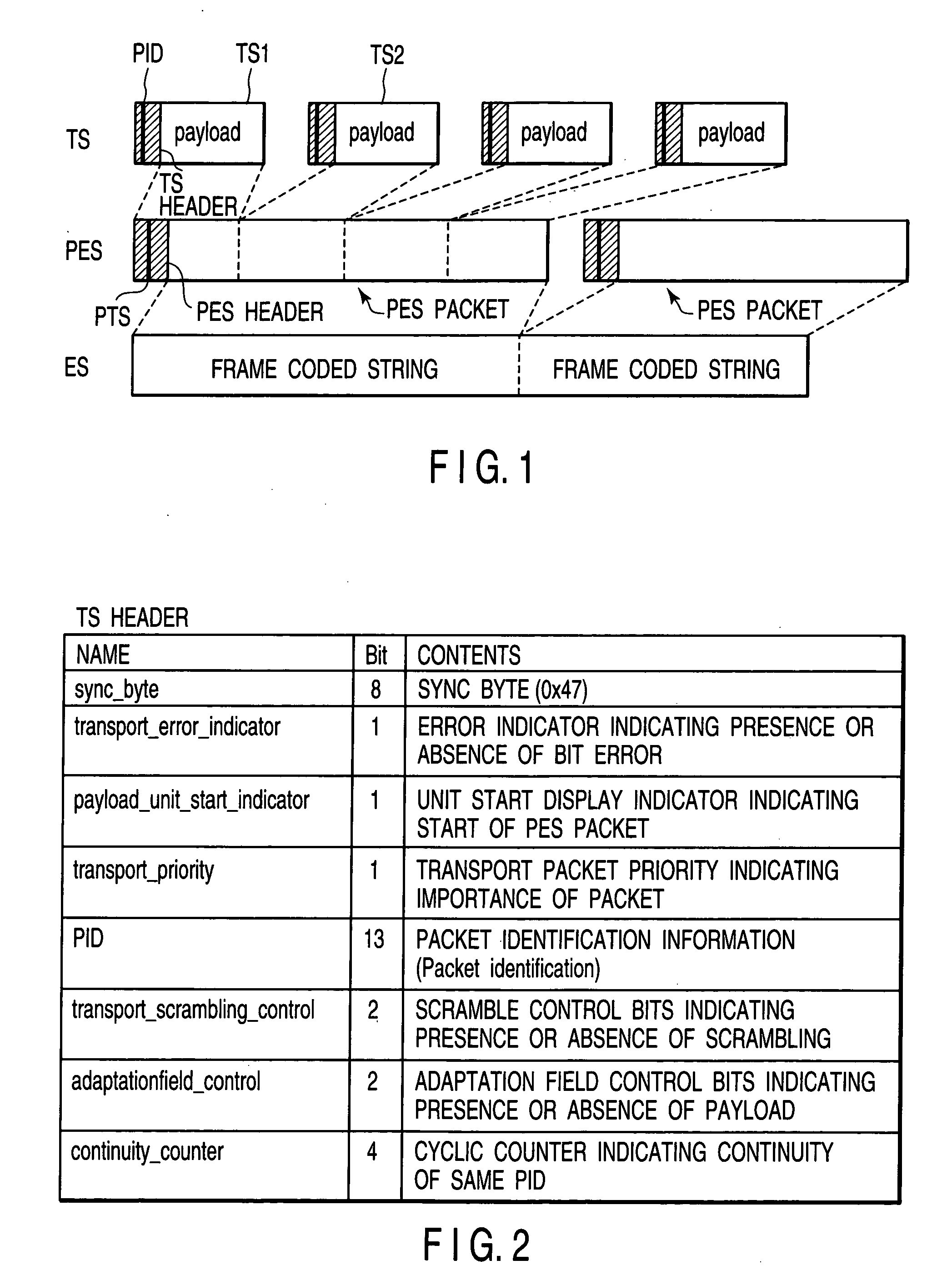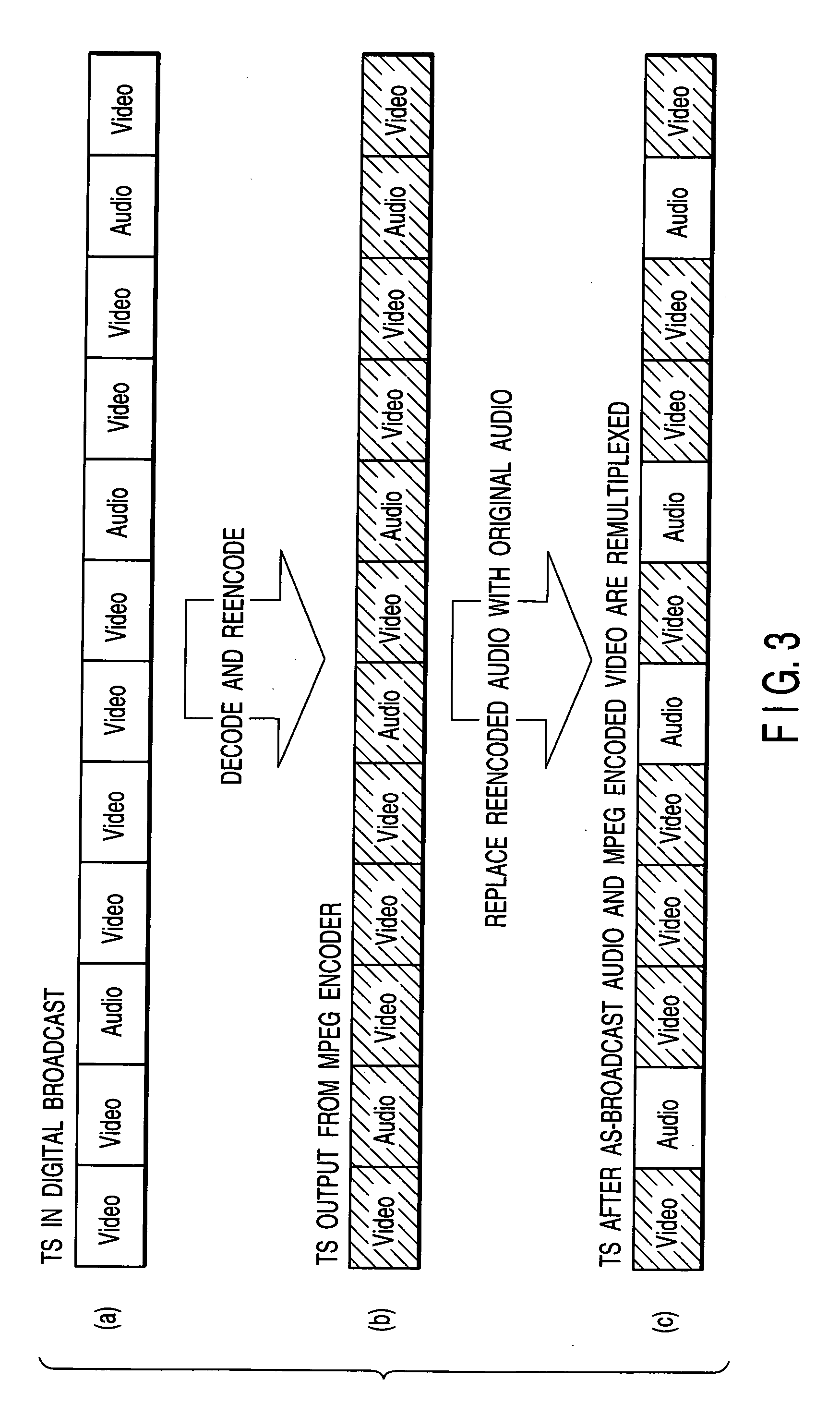Information recording device and information recording method
a technology of information recording and information, which is applied in the direction of digital recording/reproduction, color television details, television systems, etc., can solve the problems of reducing the amount of data required for recording, affecting so as to reduce the amount of data of ts and improve the quality of audio information
- Summary
- Abstract
- Description
- Claims
- Application Information
AI Technical Summary
Benefits of technology
Problems solved by technology
Method used
Image
Examples
Embodiment Construction
[0029] The embodiments of the present invention will be described in detail below with reference to the accompanying drawings.
[0030] Before describing a recording device, a TS, PES and ES will be described.
[0031]FIG. 1 shows a relationship between the TS, PES and ES in the case of video data and FIG. 2 shows the structure of the TS header.
[0032] The elementary stream (ES) is a code string obtained by encoding video information in frame units with compression. The packetized elementary stream (PES) is one obtained by dividing each frame of the ES into packets and appending a PES header to the top of the packets. The MPEG-2 standards do not specify any division unit for transforming the ES into a PES. Assuming that the TS is broadcast with data inserted in it, the ES is divided in frame units according to broadcasting standards and transformed into the PES. The PES header contains a presentation time stamp (PTS) which is time information for outputting the corresponding frame and a...
PUM
| Property | Measurement | Unit |
|---|---|---|
| presentation time stamp | aaaaa | aaaaa |
| time | aaaaa | aaaaa |
| length | aaaaa | aaaaa |
Abstract
Description
Claims
Application Information
 Login to View More
Login to View More - R&D
- Intellectual Property
- Life Sciences
- Materials
- Tech Scout
- Unparalleled Data Quality
- Higher Quality Content
- 60% Fewer Hallucinations
Browse by: Latest US Patents, China's latest patents, Technical Efficacy Thesaurus, Application Domain, Technology Topic, Popular Technical Reports.
© 2025 PatSnap. All rights reserved.Legal|Privacy policy|Modern Slavery Act Transparency Statement|Sitemap|About US| Contact US: help@patsnap.com



